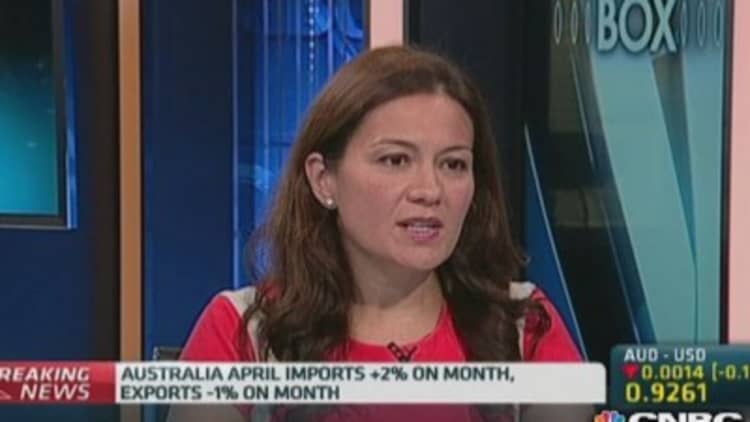Robust demand for Australia's high-yielding government bonds will result in strong inflows that drive the currency 7 percent higher to parity against the U.S. dollar by year-end, analysts at Morgan Stanley said in a note published Monday.
"With gross issuance around AUD5.5 billion ($5.14 billion) a month, there's plenty of fresh debt for global investors to buy," said Morgan Stanley's Geoffrey G Kendrick.
Read MoreWhy Australia shares have stalled
Yields on Australia's triple-A rated government bonds are among the highest on sovereign debt in the world. The 10-year note, for instance, yields 3.79 percent compared with 2.6 percent on 10-year U.S. Treasurys. The broad interest rate differential makes Australia particularly attractive to carry traders who borrow U.S. cash at record-low rates and invest it in higher yielding countries like Australia.
The Australian dollar hit a three-week high of $0.9357 late last week, and was trading at $0.9352 soon after open on Tuesday. It has rallied nearly 5 percent against the dollar so far this year following last year's 14.2 percent decline.
Read MoreIs trouble in store for the Australian economy?
Commonwealth Bank of Australia also expects a continued Aussie rise, albeit at a slower pace. In April, it lifted its year-end forecast to $0.97 from $0.84 previously, citing economic strength and the end of the Reserve Bank of Australia's (RBA) attempts to jawbone the currency lower. It expects the Aussie to reach $0.99 by March 2015.
Late last year, RBA Governor Glenn Stevens said he would prefer to see the currency closer to 85 cents. However, his stance has since become more neutral.

Skeptics abound
Other analysts are not convinced that demand for government bonds will be enough to push the Aussie dollar to parity this year.
"I can't see U.S. data slowing down, so there's got to be U.S. dollar strength sometime this year," said Evan Lucas, market strategist at IG. He expects the Aussie dollar to remain between $0.92 and $0.94 until year-end.
"The U.S. dollar side is where we have to watch, and slowly but surely we will start to see funds flowing out of Australia and moving back to the U.S. [as the U.S. dollar strengthens]," he added.
Read MoreAustralia's economy on fire in first quarter
Policy moves?
Australia kept interest rates on hold at a record low of 2.5 percent for the ninth straight month in June. Most analysts have ruled out the chance of another rate cut arguing that the bank will want to be careful to stem frothiness in the housing market.
Morgan Stanley does not expect the RBA's stance to remain neutral in 2015, however.
"While our Australia macro team notes the RBA's reluctance to ease from 2.5 percent, they look for an eventual shift towards an easing bias (partly due to the stronger AUD), which may cause this peak and decline in AUD once more," it said.



